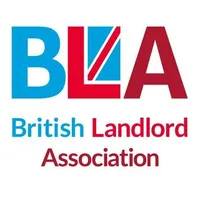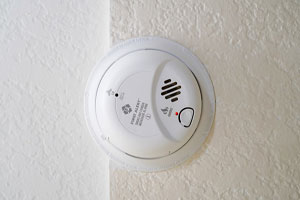Updated Regulations Complete Guide England, Wales and Scotland
Smoke Detection Updated Regulations From the 1st of March 2019 (England), landlords will be permitted to fit either mains-operated alarms or tamper-proof long-life lithium battery alarms.
Landlords with mains-powered alarms installed can leave these in place until the end of the manufacturer’s recommended lifespan. Afterwards, these can be replaced with battery or mains powered units.
Mains-operated alarms (with battery backup) are permitted, and tamper-proof/sealed/long-life lithium batteries (not PP3 type or user-replaceable) are also allowed. The expiry date should be visible on each alarm.
Smoke alarms should conform to BS EN 14604
Heat alarms should conform to BS 5446-2 Multi-sensor alarms, BS EN 54-29, or BS EN 14604. Alarms should be interlinked via hardwired wires or wirelessly (by radio communication).
When adding to an existing hardwired system, care should be taken to ensure all alarms are interlinked, with all alarms sounding when any device is activated.
Alarmingly, there were 5,310 reported fires in properties during 2017/2018 in Scotland, which resulted in 44 deaths and 1,113 injuries.
According to national fire statistics, residential properties fires in which smoke alarms the alarm is triggered continue to:
- Be discovered more rapidly [less than 5 minutes] after ignition: and
- They Are associated with lower fatal casualty rates; private rented properties in Scotland are required to comply with the “Repairing Standard” as per the Housing (Scotland) Act 2006.
To comply with the repairing standard, regard should be given to the most up-to-date Building Regulations available.
To comply with the repairing standard, there should be at least:
- One functioning smoke alarm in the room that the occupants frequently used for general daytime living purposes (usually the living room or lounge)
- One functioning smoke alarm in every circulation space on each storey, such as hallways and landings, or in the main room if there is no landing in the upper storey
- One heat alarm in every kitchen
- All alarms should be ceiling mounted, and
- All alarms should be interlinked. The fitting of a mains-operated smoke/hear alarm system may require a building warrant, and landlords should consult the Building Standards department of the local authority for details. This is also the cause should the property be a house in multiple occupations (HMO), where the more stringent standard of provision for detecting and giving warning of fire is a requirement.
Landlords may offer a lesser level of protection if they can justify why this might be appropriate in a particular home. Reasons could include:
- Where the proximity of an open fireplace would make a smoke detector impracticable, a heat detector may be fitted.
- Where the layout and design of the house mean that one detector can combine the protection required by individual sensors in different areas. Such as a kitchen/diner or open plan layout, or in small flats where the living room and hall can be covered by one smoke alarm.
- To upgrade the property, the landlord intends to fit detectors within a reasonable timescale.
Landlords should ensure that smoke and heat alarms are regularly checked and maintained to the manufacturer’s recommendations.
Carbon monoxide alarms
These include new legal requirements for the landlord to be fitted and maintain the smoke, heat, and carbon monoxide alarms.
A carbon monoxide alarm is necessary for any room with a gas, oil, or solid fuel-burning appliance (e.g., boiler, gas cooker, fireplace).
Renting Homes (Fitness for Human Habitation) (Wales) Regulations 2022 permits carbon monoxide alarms with any power source. This includes standard alkaline battery-powered alarms up to mains-powered ones with sealed lithium backup interlinked to your fire alarms.
Interlink Compatibility Hardwire Interlink Smoke alarms, heat alarms, and carbon monoxide alarms powered from a mains circuit will usually also have an interlink or interconnect terminal next to the live and neutral wire terminals.
Radio-Interlink Radio-interlinked smoke, heat, and carbon monoxide alarms communicate via radio frequency (RF).
About carbon-fuelled appliance
If you have a carbon-fuelled appliance – like a boiler, fire, heater, or flue – in any room, you should also have a carbon monoxide detector, but this does not need to be linked to the fire alarms.
You should check that each alarm complies with the following standards: smoke alarms BS EN14604:2005 heat alarms BS 5446-2:2003, carbon monoxide detector British Kitemark EN 50291-1.
More information on the standard, including the types of alarms, is in the Tolerable Standard Guidance Chapters 16 and 17 Please note that the Nest Protect System will not meet the standard.
We estimate that the cost for an average three-bedroom house which requires three smoke alarms, one heat alarm and one carbon monoxide detector, will be around £220.
Private Landlords Smoke and Carbon Monoxide Alarm
Smoke and Carbon Monoxide Alarm (Amendment) Regulations 2022 (Applies to England): guidance for landlords and tenants.
Unless excluded, the regulations apply to all homes rented by private landlords or registered social housing providers.
The following tenancies are excluded from the regulations: shared accommodation with a landlord or landlord’s family, long leases, student halls of residence, hotels and refuge care homes, hospitals and hospices, low-cost ownership homes other accommodations relating to health care provision.
If the occupier shares the accommodation with the private landlord or the private landlord’s family, these regulations do not apply.
For these regulations, a private landlord is where they share accommodation with the tenant(s) if they share an amenity such as a kitchen or living room.
Social landlords and Smoke and Carbon Monoxide Alarm
The Smoke and Carbon Monoxide Alarm (Amendment) Regulations 2022
The Regulations amend the Smoke and Carbon Monoxide Alarm (England) Regulations 2015 (“the 2015 Regulations”) to extend the current duties and to impose such obligations on landlords who are registered providers of social housing.
Regulation 4 amends the definition of the relevant landlord so that landlords registered providers of social housing are now included (the previous definition expressly excluded such landlords).
What is an Interlinked alarm?
Once connected, each interlinked alarm communicates continuously across a meshed network to monitor for fire or carbon monoxide (CO).
Once connected, each interlinked alarm communicates continuously across a meshed network to monitor fire or carbon monoxide (CO).
For Scotland: Fire and smoke alarms: changes to the law
The fire alarm law has changed, meaning all Scottish homes will need interlinked alarms.
Free Home Fire Safety visits from the Scottish Fire and Rescue Service (SFRS).
The Scottish Fire and Rescue Service (SFRS) will only fit interlinked alarms into owner-occupied homes to protect the most vulnerable.
This is where the individual/household is assessed as “high risk” through our Home Fire Safety Visit assessment process.
Safety standards for Smoke and Carbon Monoxide Alarm
Domestic smoke and carbon monoxide alarms: proposals to extend regulations. It also does not include other types of housing with their safety standards, such as care homes, student halls of residents, hostels, hospices, and other accommodations relating to healthcare provision.
criminal offence (Scotland)
It will not be a criminal offence not to have the alarms fitted.
However, like other elements of the Tolerable Standard, any intervention should be proportionate, rational, and reasonable. Therefore, it is not a criminal offence when owners cannot meet the standard.
Type of Smoke alarms
Smoke and Carbon Monoxide Alarm (Amendment) Regulations 2022: guidance for landlords and tenants.
The regulations do not stipulate the type of alarms (such as mains powered (‘hardwired’) or battery powered) that should be installed.
The regulations do not stipulate the type of alarms (such as mains powered (‘hard wired’) or battery powered) that should be fitted.
Legal requirements for Smoke Alarms
Smoke and Carbon Monoxide Alarm (Amendment) Regulations 2022: guidance for landlords and tenants.
This has been a legal requirement in the private rented sector since 2015.
For example, landlords should write to their tenants to explain that it is a legal requirement to fit the alarms and that it is for the tenant’s safety.
For example, landlords should write to their tenants to explain that it is a legal requirement to fit the alarms and that it is for the tenant’s safety.
For standards in Scotland
You can access further information about the 2019 Order extending the Tolerable Standard criterion here.
The Annex A of the SHQS guidance highlights that the Tolerable Standard consists of a changing set of legal requirements that are also a subset of SHQS.
Additional smoke alarms
To ensure the highest level of safety for you and your family, we encourage: Additional smoke alarms to be fitted in bedrooms and be interlinked into the network – giving you the fastest alert to fires whilst you’re sleeping.
Heat alarms are also to be installed in garages and lofts/attics. Carbon monoxide alarms are to be fitted in all rooms where you spend most of your time, e.g.
Bedrooms and living rooms. You can also fit an intelligent alarm system which will allow you to test your alarm system via your phone, be notified of any device issues within the system and be notified of any fire or carbon monoxide alerts whilst you’re away from home.
Statistics
Smoke alarms are shown to save lives: UK government statistics show you are around 8 times more likely to die in a fire if you do not have any working smoke alarms in your home. Of all dwelling fires, around three-quarters (74%) were in houses, bungalows, converted flats, and other properties, whilst around a quarter (26%) were in purpose-built flats.
The British Landlords Association is a national landlords association for residential & commercial landlords. Join us today; membership for the year is only £69,95!
Our top read blogs:
Landlord EICR Electrical Safety inspection report 2021 Guide
Is our housing market about to crash?
7 Advertising Tips to Attract High-quality Tenants to Your Rental Property
How to Comply with GDPR – landlord agent Guide 2022
How to get a UK Air Source Heat Pump Grants
How to Decide If a Property Needs a Water Softener or Water Filter?





